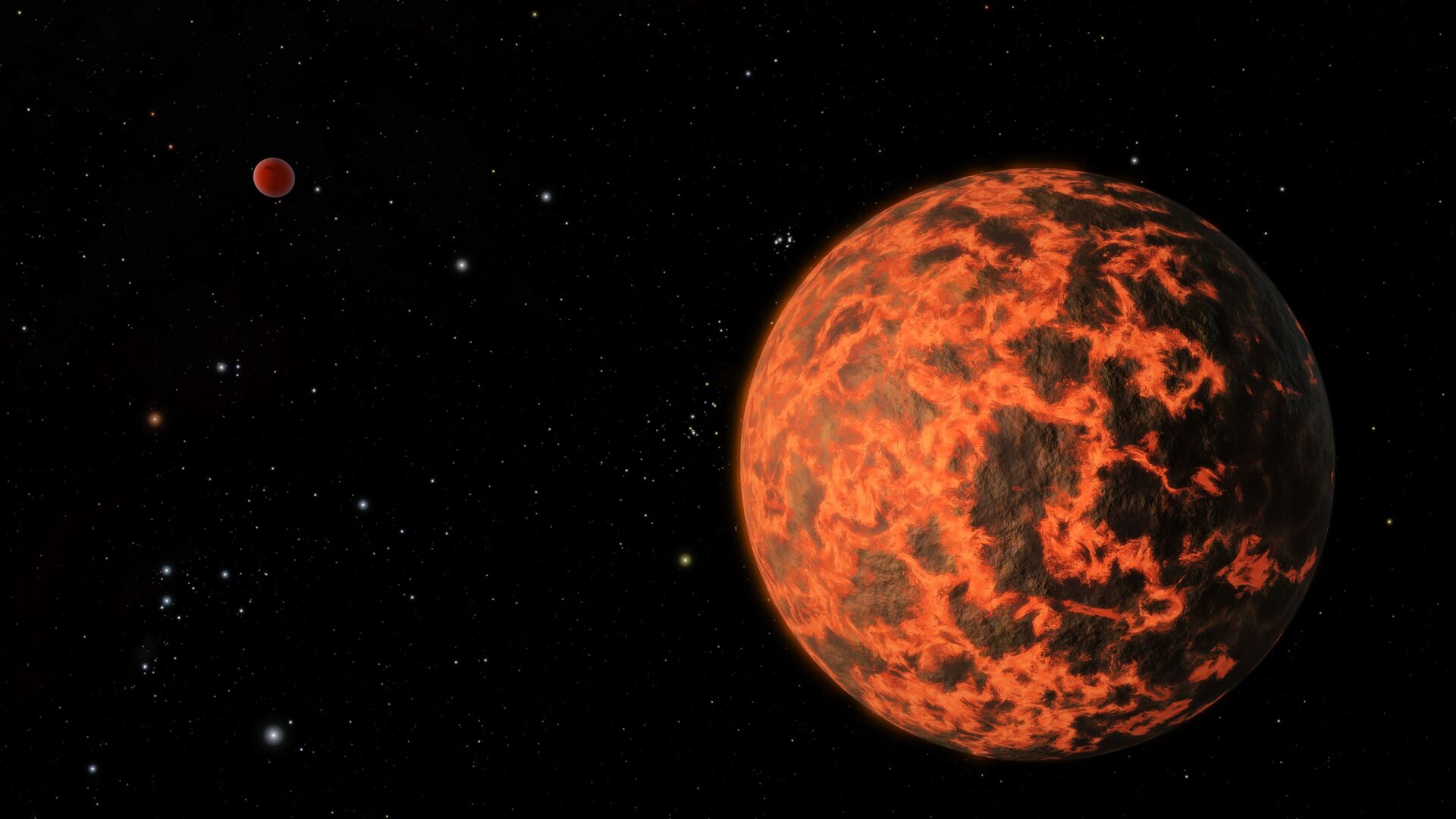https://sputnikglobe.com/20221124/gigantic-keystone-super-earth-found-in-deep-space-1104665433.html
Gigantic 'Keystone Super-Earth' Found in Deep Space
Gigantic 'Keystone Super-Earth' Found in Deep Space
Sputnik International
The newly discovered planet's mass is nearly ten times that of Earth, and temperatures on its surface reach over 1,000 degrees Celsius. 24.11.2022, Sputnik International
2022-11-24T18:54+0000
2022-11-24T18:54+0000
2022-11-24T18:54+0000
science & tech
super-earth
planet
discovery
nasa
https://cdn1.img.sputnikglobe.com/img/07e4/08/0a/1080120498_0:0:3641:2048_1920x0_80_0_0_4c96556fbbcd50b87f96979418357c92.jpg
A humongous rocky “super-Earth” exoplanet has been discovered in space, orbiting a distant star some 200 light years away via observations from NASA’s Transiting Exoplanet Survey Satellite spacecraft.The planet, designated TOI-1075b, has a mass ten times greater than that of Earth and the proximity to its host star results in temperatures at the planet’s surface reaching 1,050 degrees Celsius.TOI-1075b appears to be one of the largest super-Earth type planets discovered so far, NASA noted, adding that the study of this planet might “yield new insight into the formation of rocky planets like our own”.Despite so called “super-Earths” appearing to be fairly common in the galaxy, there are none of them in the Solar System.What makes TOI-1075b particularly intriguing for scientists is the fact that existing models suggest a planet of that size should have a thick atmosphere comprised of hydrogen and helium, but the available data about the planet’s orbit and composition suggest otherwise.“That makes TOI-1075 b a 'keystone planet' – among only a few others so far with precise enough measurements of size and mass to help scientists fine-tune their models of planet formation,” NASA said on its website. “That, in turn, will help them predict just what kinds of atmospheres super-Earths and other planet types possess, or whether they have atmospheres at all.”
https://sputnikglobe.com/20221020/its-a-marshmallow-world-astronomers-find-fluffy-exoplanet-with-density-of-sweet-treat-1102478799.html
Sputnik International
feedback@sputniknews.com
+74956456601
MIA „Rossiya Segodnya“
2022
Sputnik International
feedback@sputniknews.com
+74956456601
MIA „Rossiya Segodnya“
News
en_EN
Sputnik International
feedback@sputniknews.com
+74956456601
MIA „Rossiya Segodnya“
Sputnik International
feedback@sputniknews.com
+74956456601
MIA „Rossiya Segodnya“
science & tech, super-earth, planet, discovery, nasa
science & tech, super-earth, planet, discovery, nasa
Gigantic 'Keystone Super-Earth' Found in Deep Space
The newly discovered planet's mass is nearly ten times that of Earth, and temperatures on its surface reach over 1,000 degrees Celsius.
A humongous rocky “super-Earth” exoplanet has been discovered in space, orbiting a distant star some 200 light years away via observations from NASA’s Transiting Exoplanet Survey Satellite spacecraft.
The planet, designated TOI-1075b, has a mass ten times greater than that of Earth and the proximity to its host star results in temperatures at the planet’s surface reaching 1,050 degrees Celsius.
TOI-1075b appears to be one of the largest super-Earth type planets discovered so far, NASA noted, adding that the study of this planet might “yield new insight into the formation of rocky planets like our own”.

20 October 2022, 20:33 GMT
Despite so called “super-Earths” appearing to be fairly common in the galaxy, there are none of them in the Solar System.
What makes TOI-1075b particularly intriguing for scientists is the fact that existing models suggest a planet of that size should have a thick atmosphere comprised of hydrogen and helium, but the available data about the planet’s orbit and composition suggest otherwise.
“That makes TOI-1075 b a 'keystone planet' – among only a few others so far with precise enough measurements of size and mass to help scientists fine-tune their models of planet formation,” NASA said on its website. “That, in turn, will help them predict just what kinds of atmospheres super-Earths and other planet types possess, or whether they have atmospheres at all.”


